Cyromazine
Synonym(s):N-Cyclopropyl-1,3,5-triazin-2,4,6-triamine;Cyromazin
- CAS NO.:66215-27-8
- Empirical Formula: C6H10N6
- Molecular Weight: 166.18
- MDL number: MFCD00078650
- EINECS: 266-257-8
- SAFETY DATA SHEET (SDS)
- Update Date: 2025-12-19 17:28:17
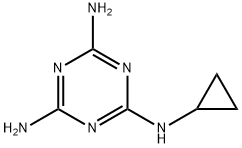
What is Cyromazine?
Chemical properties
White crystalline powder. The solubility in water is 11,000 mg/L at 20°C and pH 7.5, and the hydrolysis is not obvious at pH 5-9.
The Uses of Cyromazine
Cypromazine is a high-efficiency and low-toxicity insecticide. It is mainly used to control leafminer pests, has a good control effect on Liriomyza, and can also be used to control flies.
What are the applications of Application
Cyromazine is an insect growth regulator, used to control fly larvae in livestock and poultry manure. It can be fed directly to livestock or applied directly to fly breeding sites. Cyromazine also exhibits systemic activity and is used as a foliar spray to control leaf miners in vegetables, potatoes, etc., and on mushrooms.
What are the applications of Application
Cyromazine is a non-organophosphorus insect growth regulator
Definition
ChEBI: Cyromazine is a triamino-1,3,5-triazine. It has a role as a triazine insecticide and a mouse metabolite.
Preparation
Cyromazine is prepared by the reaction of cyanuric chloride and cyclopropylamine to obtain 2-Cyclopropylamino-4,6-dichloro-triazepine, and then reacts with ammonia to obtain 2-Cyclopropylamino-4-chloro-6-aminostriazepine, and then reacting with ammonia to produce.
General Description
N-Cyclopropyl-2,4,6-triamino-1,3,5-triazine, also known as cyromazine, is an insect growth regulator(IGR) that is commonly used as an insecticide. It undergoes metabolism in plants and animals to form melamine. Surface-enhanced Raman scattering (SERS) spectroscopic study indicates that it interacts with the surface of silver colloid through the lone pair on nitrogen.
Flammability and Explosibility
Not classified
Agricultural Uses
Insecticide (insect growth regulator): As an insect growth regulator, cyromazine is fed to caged poultry and is passed through the chicken, leaving a residue in the manure. The chemical controls the growth of the fly larvae developing in the manure. Used as a foliar spray to control leaf miners in vegetables, mushrooms, potatoes and ornamentals and to control flies on animals.
Trade name
ARMOR®; CITATION; CGA-72662®; LARVADEX®; PATRON®; TRIGARD®; VETRAZIN®
Environmental Fate
Chemical/Physical. Cyromazine will react with mineral acids (e.g., hydrochloric acid, sulfuric acid) forming water-soluble salts
Metabolic pathway
Information presented in this summary is abstracted from the data evaluation published by the Pesticide Safety Directorate (PSD, 1993). The major degradation pathway of cyromazine involves the N-dealkylation of the cyclopropyl moiety to yield melamine. Both cyromazine and melamine are quite stable to biotransformation. Deamination and the formation of N-methylcyromazine were observed as minor pathways.
Degradation
Cyromazine (1) is stable to hydrolysis at pH 5, 7 and 9 and 70 °C for up to 28 days. No degradation of cyromazine was observed when irradiated under mercury vapour lamp (>290 nm) at 25 °C for up to 168 hours.
Properties of Cyromazine
| Melting point: | 223-227 °C (lit.) |
| Boiling point: | 284.39°C (rough estimate) |
| Density | 1.3196 (rough estimate) |
| vapor pressure | 4.5 x l0-7 Pa (25 °C) |
| refractive index | 1.8300 (estimate) |
| Flash point: | 100 °C |
| storage temp. | 2-8°C |
| solubility | DMSO (Slightly), Methanol (Slightly) |
| form | neat |
| Water Solubility | 13 g l-1 (pH 7.1,25 °C) |
| pka | 5.2 (base) |
| form | Solid |
| color | White to Off-White |
| Merck | 14,2775 |
| BRN | 882879 |
| Stability: | Hygroscopic |
| CAS DataBase Reference | 66215-27-8(CAS DataBase Reference) |
| NIST Chemistry Reference | Cyromazine(66215-27-8) |
| EPA Substance Registry System | Cyromazine (66215-27-8) |
Safety information for Cyromazine
| Signal word | Warning |
| Pictogram(s) |
 Environment GHS09 |
| GHS Hazard Statements |
H411:Hazardous to the aquatic environment, long-term hazard |
| Precautionary Statement Codes |
P273:Avoid release to the environment. P391:Collect spillage. Hazardous to the aquatic environment P501:Dispose of contents/container to..… |
Computed Descriptors for Cyromazine
| InChIKey | LVQDKIWDGQRHTE-UHFFFAOYSA-N |
Cyromazine manufacturer
New Products
4,4-Difluoropiperidine hydrochloride tert-butyl 9-methoxy-3-azaspiro[5.5]undecane-3-carboxylate Indole Methyl Resin N-Isopropylurea N,N-Dicyclohexylcarbodiimide(DCC) MELDRUMS ACID 5-METHYLISOXAZOLE-4-CARBOXYLIC ACID Magnessium Bis glycinate Zinc ascorbate 1-bromo-2-butyne 2-acetamidophenol 9(10H)-anthracenone Erythrosin B, 4-Piperidinopiperidine 2-((4-morpholinophenylamino) (methylthio) methylene) malononitrile 2,4-dihydroxybenzaldehyde 3-(4-morpholinophenylamino)-5-amino-1H-pyrazole-4-carbonitrile Methyl 2-methylquinoline-6-carboxylate 2,6-dichloro-4-nitropyridine 4-Bromo-2-chlorobenzonitrile 2-(benzylamino)acetic acid hydrochloride 4-(tert-Butoxycarbonylamino)but- 2-ynoic acid 3,4-dihydro-2H-benzo[b][1,4]dioxepine 1-Phenyl-1-cycloprppanecarboxylicacidRelated products of tetrahydrofuran

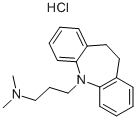
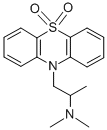

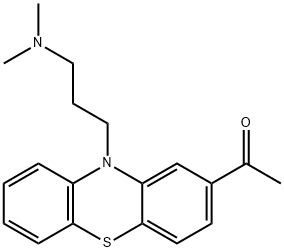


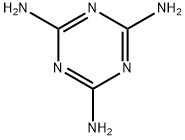
You may like
-
 Cyromazine CAS 66215-27-8View Details
Cyromazine CAS 66215-27-8View Details
66215-27-8 -
 Cyromazine 95% CAS 66215-27-8View Details
Cyromazine 95% CAS 66215-27-8View Details
66215-27-8 -
 Liquid CYROMAZINE CAS NO 66215-27-8View Details
Liquid CYROMAZINE CAS NO 66215-27-8View Details
66215-27-8 -
 Cyromazine PureView Details
Cyromazine PureView Details
66215-27-8 -
 CyromazineView Details
CyromazineView Details
66215-27-8 -
 Cyromazine 1%, Bag, 2 kgView Details
Cyromazine 1%, Bag, 2 kgView Details
66215-27-8 -
 75 WP Crop Protection CyromazineView Details
75 WP Crop Protection CyromazineView Details
66215-27-8 -
 White Cyromazine Powder, Pp Bag, 25 KgView Details
White Cyromazine Powder, Pp Bag, 25 KgView Details
66215-27-8
